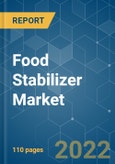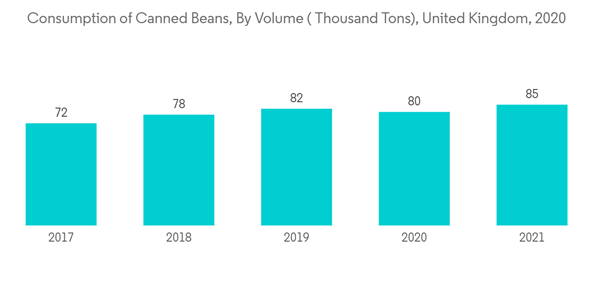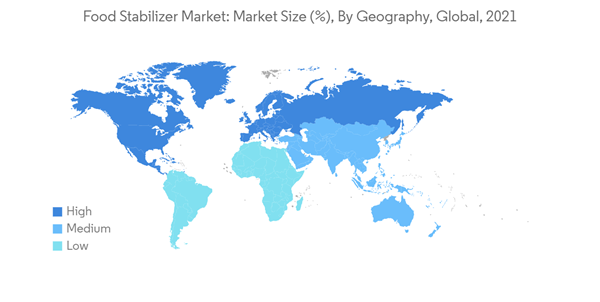The COVID19 crisis had a significant effect on the market. The manufacturers of food stabilizers have terrifically faced the consequences, this was due to the closures of the various manufacturing unit, which resulted in deceleration of the production in the food stabilizers across the globe. For instance, Kerry Group plc, which is one of the major players in this industry had estimated a fall in the revenue by 6% in fiscal 2021.
The food stabilizer market is driven by increasing demand for convenience food and the rising influence of westernized food consumption patterns paired with growing preference for specialized and customized blends by food and beverage processing which has propelled the application of food stabilizers in the market.
The growing demand for quick-service restaurants across the globe is one such factor that is driving the food stabilizer market, because of the growing demand of different cuisins from various parts across the globe.
Key Market Trends
Increased Demand for Processed Food
With the changing lifestyle of the consumers, the consumer are preferring more healthy foods rather than food that contain a high percentage of oil and fats. Rising demand for prepared and convenience food products such as baked goods, breakfast cereals, cheese, meat, and other beverages among the consumers have been witnessed with an increasing trend. This is also due to the benefits of convenience food such as lesser preparation time and easy handling that offers an advantage to the consumers in their busy life schedule. Food stabilizers make up a very small part of the final product, but they have a significant impact on the final packaged product. For instance, products, ranging from fat-free dressing, low-fat mayonnaise, sauces, processed meat products, etc., require a broad variety of functional ingredients to provide optimization in terms of stability, creaminess, shelf-life, viscosity, and water absorption, among others.
Europe is the Largest Market
Growing preference for specialized and customized blends by confectionery and bakery product manufacturers is driving demand for food stabilizers in the regions. Also, the demand for natural ingredients in packaged food has influenced the ingredient buying behavior and it is expected to drive the demand for natural stabilizers in the region. Eventually, the key players in the market are focusing on expansion and product development to gain market share in the food stabilizer market. Food stabilizers play a significant role in providing a better aroma, color, and texture to the foods. The consumers in this region are more into bakery-based products, whereas, the cuisines such as Italian foods are dragging pr capita spending towards the final products due to the taste of these foods worldwide.
Competitive Landscape
The market studied is highly competitive in nature, this is due to the presence of domestic and international players in this sector. The major players of the industry are Cargill, Incorporated, Tate & Lyle PLC, Kerry Group plc, DuPont's, and BASF SE. Key players are majorly focusing on product development and product innovation to meet the consumer's needs by offering a variety in taste and in the product's quality to maintain premiumization. Some of the major players use mergers and acquisitions as their key strategy. The strategy to follow mergers and acquisitions by these top players is to sustain and secure a leading position in the industry, this will enable the companies to maintain dominance over other players, and also the companies can remain a strong competition for other players in the market.
Additional Benefits:
- The market estimate (ME) sheet in Excel format
- 3 months of analyst support
This product will be delivered within 2 business days.
Table of Contents
Companies Mentioned (Partial List)
A selection of companies mentioned in this report includes, but is not limited to:
- Cargill, Incorporated
- Tate & Lyle PLC
- Archer Daniels Midland Company
- Ashland Inc
- Kerry Group plc
- Palsgaard A/S
- Nexira SAS
- DuPont's
- Ingredion Incorporated
- BASF










